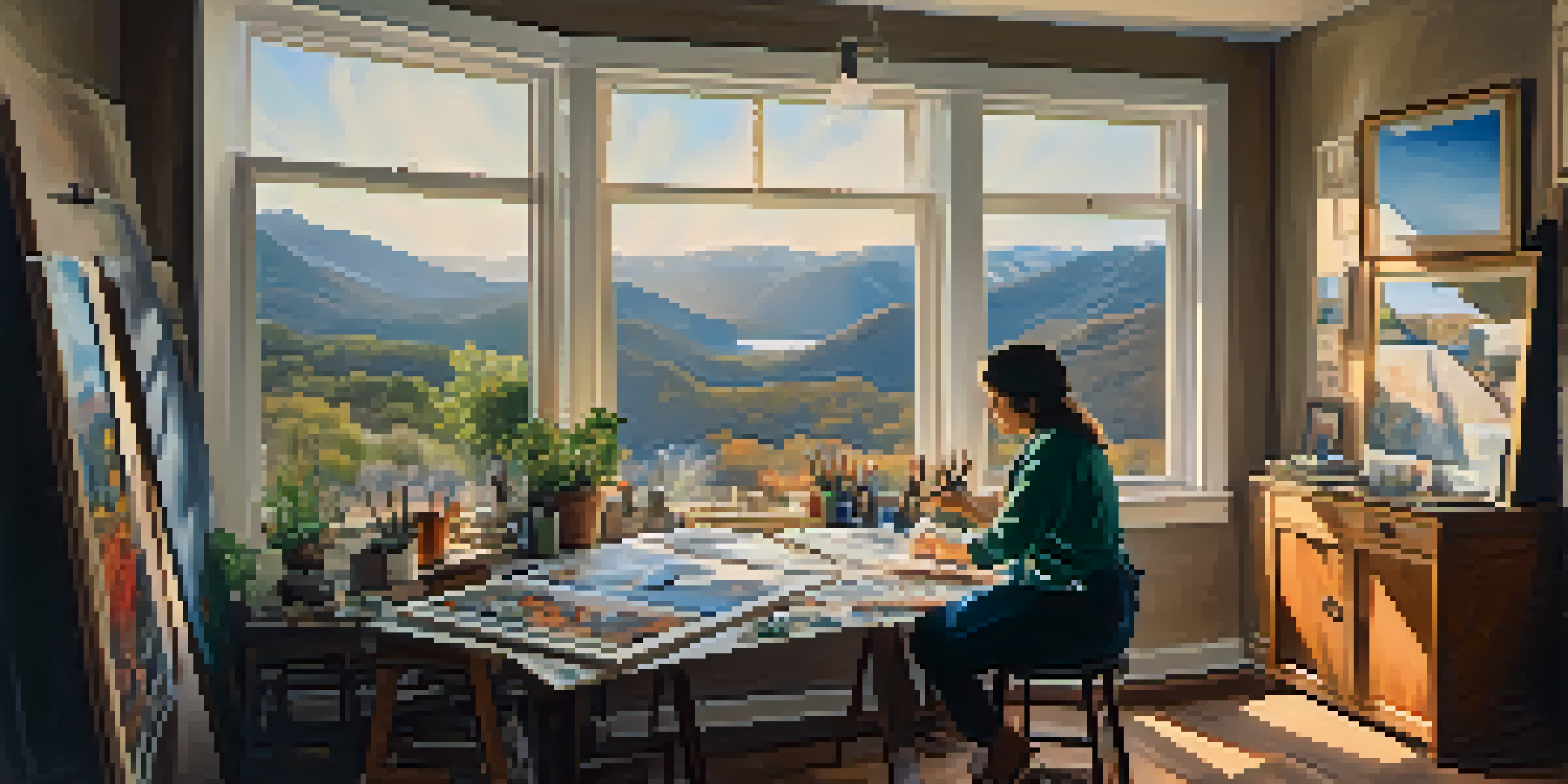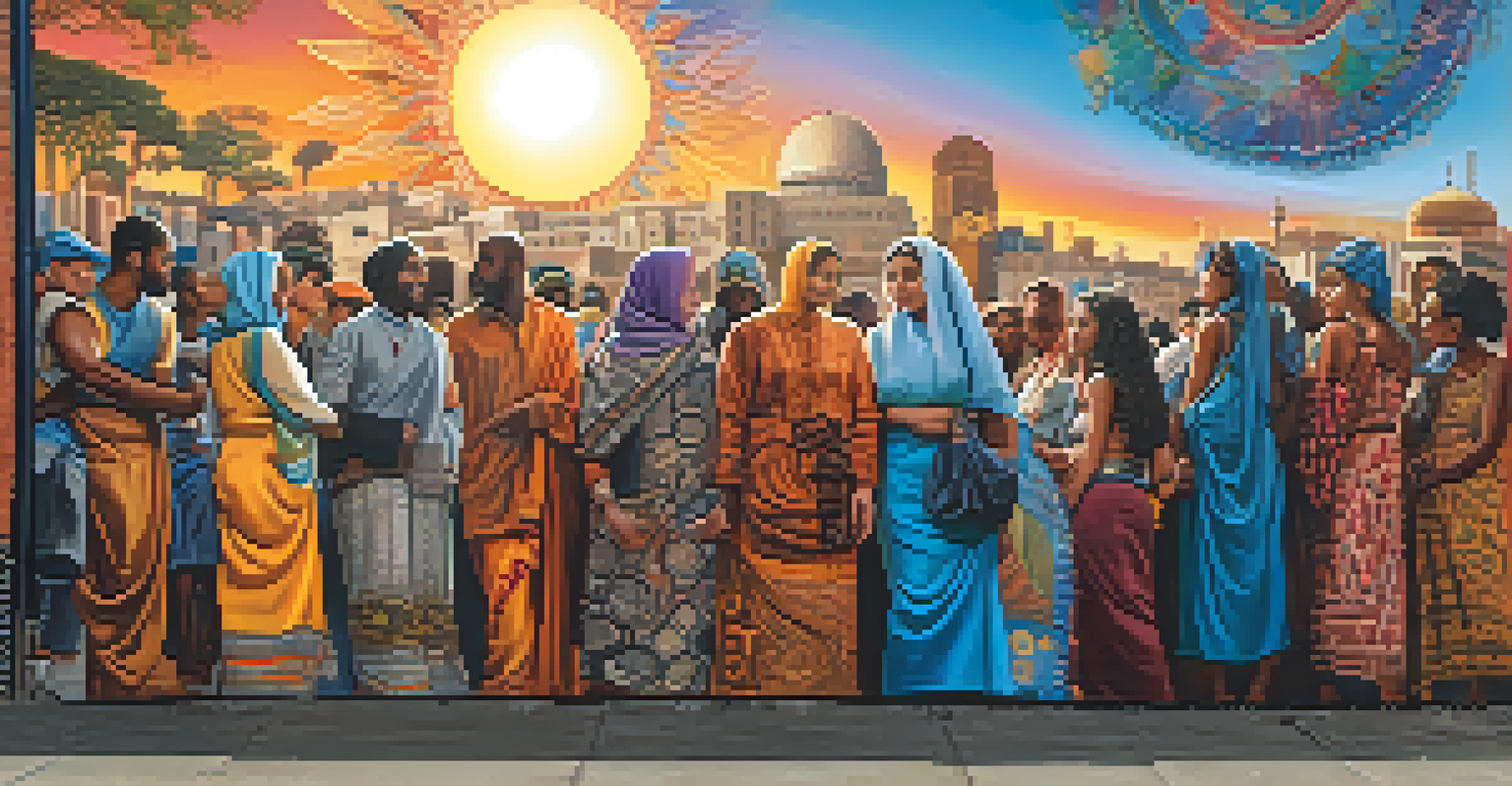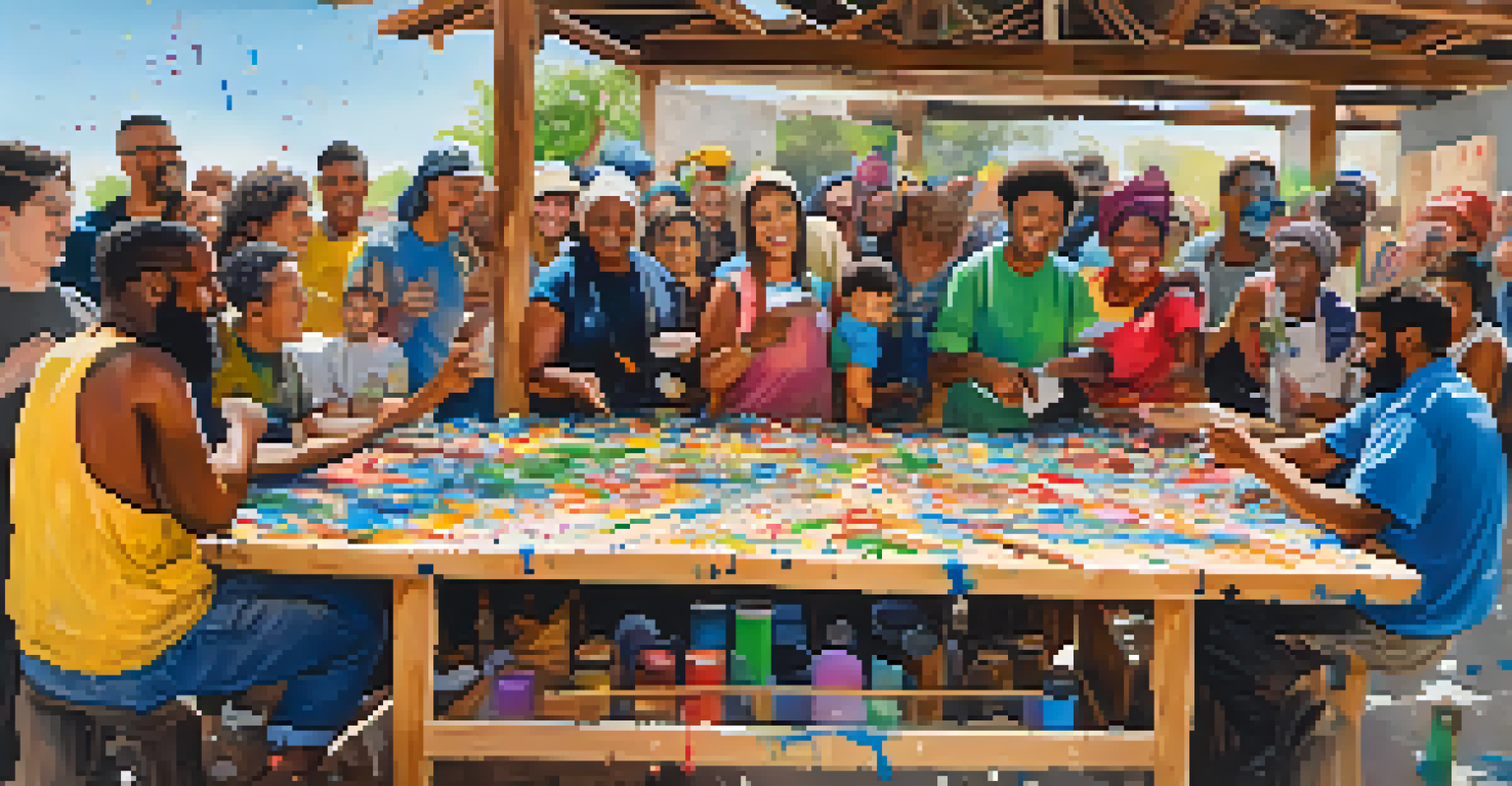The Use of Art as a Tool for Refugee Advocacy

Understanding the Intersection of Art and Refugee Advocacy
Art has long been a medium for expression and communication, but its role in refugee advocacy is particularly profound. It serves as a bridge, connecting communities and fostering empathy for those displaced by conflict and crisis. Through various forms of art, such as painting, music, and theater, we can gain insights into the personal stories of refugees, making their struggles more relatable.
Art is a powerful medium that can bring light to the stories of those who are often silenced.
When artists share their perspectives on the refugee experience, they illuminate the often-overlooked human side of displacement. This helps to challenge stereotypes and break down barriers, inviting audiences to engage with the issue on a deeper level. By fostering understanding, art becomes a tool for compassion, inspiring action and support for refugee rights.
Moreover, the emotional resonance of art can evoke a sense of urgency and importance around refugee issues. It can galvanize communities, sparking conversations that lead to tangible change. Ultimately, art not only reflects reality but can also shape it, making it a vital component of advocacy.
Case Studies: Successful Art Initiatives for Refugees
Several art initiatives have successfully raised awareness and funds for refugee causes. For instance, the 'Refugee Art Project' in Australia empowers refugees to share their stories through visual art, creating a platform for their voices to be heard. This initiative not only showcases the talents of refugees but also helps to humanize their experiences in the eyes of the community.

Another example is the 'Art for Refugees' campaign, which brings together artists from various backgrounds to create works that reflect the refugee experience. By auctioning these pieces, the campaign raises significant funds for organizations supporting refugees. This demonstrates the potential of art to mobilize resources and foster solidarity.
Art Connects Communities and Refugees
Art serves as a powerful bridge, fostering empathy and understanding by sharing the personal stories of refugees.
These case studies highlight the effectiveness of art in advocacy. By creating spaces for refugees to express themselves, these initiatives not only amplify their voices but also encourage community engagement and support, proving that art can be a powerful catalyst for change.
Art as a Medium for Storytelling and Healing
For many refugees, art serves as a form of storytelling and healing. Engaging in creative expression allows individuals to process their experiences and emotions, providing a therapeutic outlet amidst trauma. This is especially important for those who may struggle to articulate their feelings verbally, as art can transcend language barriers.
Creativity takes courage.
Art can also foster a sense of community among refugees, creating shared experiences that build connections. Group art projects, such as murals or collaborative performances, enable participants to work together, share their narratives, and find strength in unity. This collaborative spirit can be incredibly empowering, helping to rebuild a sense of identity and belonging.
Through storytelling, art has the power to transform pain into hope. It can inspire resilience and courage, reminding both the artists and their audiences that despite adversity, there is beauty and strength in the human spirit. This transformative nature of art is crucial in the journey toward healing and advocacy.
The Role of Social Media in Amplifying Art and Advocacy
In today's digital age, social media plays a pivotal role in amplifying art and advocacy efforts for refugees. Platforms like Instagram and Twitter allow artists to reach a global audience, sharing their work and the stories behind it instantaneously. This increased visibility enables a wider conversation around refugee issues, fostering empathy and understanding.
Social media campaigns, such as #ArtForRefugees, encourage individuals to create and share their own artistic expressions related to refugee experiences. This collective effort not only raises awareness but also empowers others to participate in the conversation, creating a sense of community among advocates and supporters. It transforms art into a movement, driving engagement and action.
Successful Art Initiatives Raise Awareness
Art initiatives like the 'Refugee Art Project' effectively amplify refugee voices and mobilize support within communities.
Furthermore, social media can facilitate fundraising efforts for refugee organizations, showcasing art auctions or donation drives. This digital landscape not only democratizes access to art but also emphasizes the urgency of the refugee crisis, making it an essential tool for contemporary advocacy.
Engaging Local Communities Through Art Projects
Local communities play a critical role in supporting refugees, and art projects can serve as a powerful means of engagement. Initiatives that bring together local artists and refugees foster collaboration and understanding, creating a shared space for storytelling and cultural exchange. This not only enriches the artistic landscape but also creates community bonds.
For instance, community mural projects can beautify neighborhoods while highlighting the stories of refugees. These public displays of art invite dialogue and encourage locals to learn about the experiences of their new neighbors. Such projects can transform perceptions, making the community more inclusive and supportive of refugees.
By involving local residents in these projects, art becomes a vehicle for social change, promoting a culture of empathy and solidarity. It reinforces the idea that everyone, regardless of background, has a story to share, paving the way for a more harmonious coexistence.
Challenges Faced by Artists in Refugee Advocacy
While art can be a powerful tool for advocacy, artists involved in refugee issues often face significant challenges. Limited resources, lack of funding, and bureaucratic hurdles can stifle creative expression and hinder the reach of their work. Additionally, some artists may grapple with their own trauma, which can impact their ability to create and share their stories.
Navigating the complexities of refugee advocacy can also be daunting. Artists may struggle to find the right balance between raising awareness and sensitively portraying the experiences of refugees without exploitation. This delicate balance is crucial, as it can influence how audiences perceive the issues at hand.
Social Media Enhances Art Advocacy
Platforms like Instagram and Twitter significantly amplify art and advocacy efforts for refugees, creating a global conversation.
Despite these challenges, many artists remain committed to their advocacy work, driven by a passion for change. Building supportive networks and collaborating with organizations focused on refugee rights can help artists overcome obstacles and amplify their impact in the community.
The Future of Art in Refugee Advocacy
Looking ahead, the future of art in refugee advocacy appears promising, with an increasing recognition of its importance. As more organizations and communities embrace art as a means of engagement, we can expect to see innovative projects that challenge the status quo and push for meaningful change. The integration of technology, such as virtual reality and interactive installations, will further enhance the impact of art on audiences.
Moreover, the collaboration between artists, refugees, and advocacy groups is likely to deepen, fostering a more inclusive dialogue about displacement and resilience. By centering the voices of refugees in artistic projects, we can ensure that their stories are not only heard but also celebrated, reinforcing their agency and humanity.

Ultimately, art will continue to be an essential tool in the fight for refugee rights, bridging gaps and inspiring action. By harnessing the power of creativity, we can cultivate empathy and drive meaningful change, making the world a more compassionate place for all.